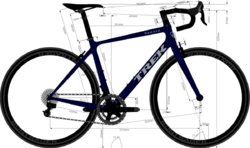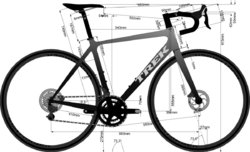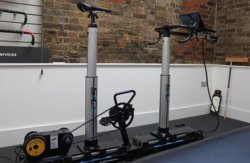Care is needed analysing data regarding sizing, listing a bike as a size, 54, 56cm etc may not tell the whole story, the listed size maybe specific to a particular model let alone a brand and not a generic measurement needed to compare one bike with another; you often need to look more closely at the geometry. With so many styles and brands of bikes it is not uncommon for a 54cm in one brand to be larger than a 56cm in another. Common examples of where the size is referenced are 'actual seat tube', 'effective seat tube', 'actual top tube', 'effective top tube' and often the number doesn't seem to relate to much at all, others may use Small, Medium etc; no wonder many get confused..
In the two examples below, a
54cm Trek Domane and
54cm Trek Emonda both are listed as 54cm, both have a 54.3cm top tube yet the stack and reach is longer and lower on the Emonda resulting in a more aggressive riding position.

 BikeCAD Pro
BikeCAD Pro can morph one drawing into another that may help illustrate this better, you can see that I've used the same saddle height and set back, the Domane by design actually offers a shorter and higher riding position even though some of the data especially at first glance may not highlight that.
Most list 'Stack' and 'Reach' (575/374 on the Domane and 555/381 on the Emonda) and providing you already know a set up that works for you and have those two numbers then that should at least help. This is also where bike fitting can help, especially if they have a sizing jig that can be set up to each bike you are considering, many fitters will often offer a 'sizing fit' service for this very reason, to help you feel the differences between models.
